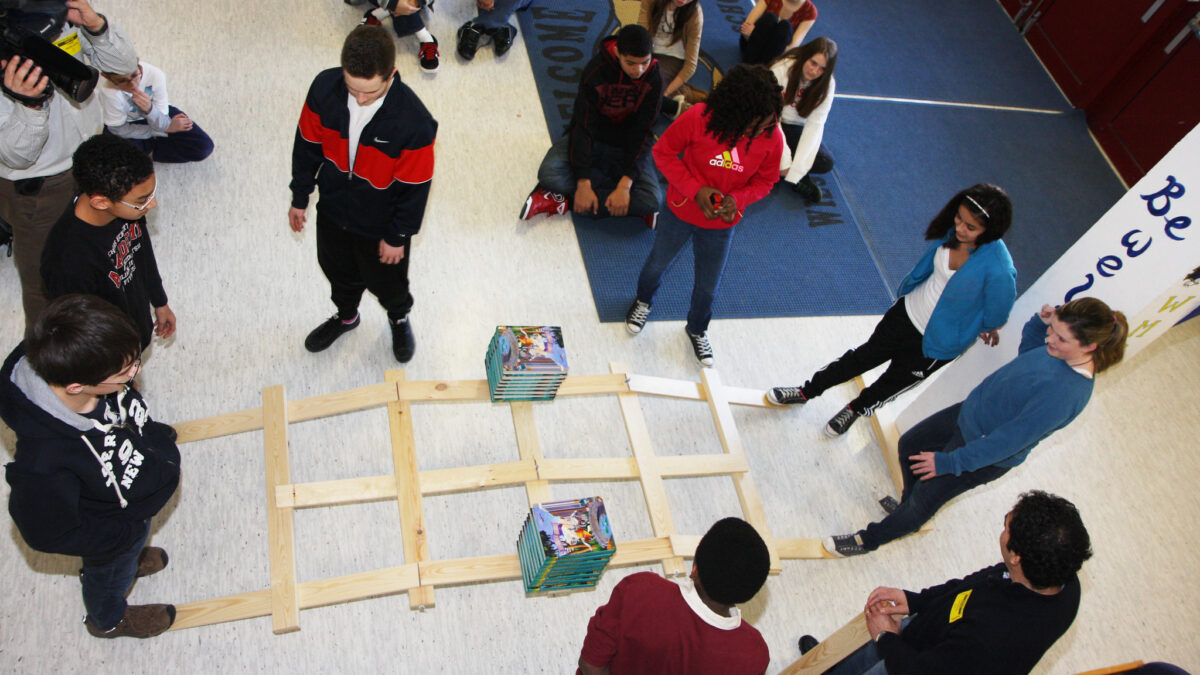
On Feb. 28, 2020, Dr. Robin DiAngelo delivers the keynote speech at the annual meeting of the American Association of Colleges for Teacher Education in Atlanta, Georgia. DiAngelo has become “perhaps the country’s most visible expert in anti-bias training.” She is also the author of a best-selling book on “why it’s so hard for white people to talk about racism.”
The answer, she says, is “white fragility,” defined as “a state in which even a minimum amount of racial stress becomes intolerable, triggering a range of defensive moves.” This “racial stress” is the direct result of “implicit bias,” which runs so strong in white people that it is a core reason racism persists in America. This claim is based on a worldview, advanced by an increasingly influential field called Whiteness Studies, that racism is inseparable from the reign of Whiteness.
Whiteness is seen as a central pillar of society. What is Whiteness? It is hard to say, but the basic idea is that all the institutions of society are “white”—made by white people, ruled by white people, and kept in place by white people to make sure that white people continue to benefit from “white privilege.” These institutions are infected by white supremacy, a result of the long arc of racism in American history. Whiteness works through implicit bias, which refers to a whole range of unconscious behaviors, speech, and beliefs that keep white supremacy in place.
It should not be surprising that many white people are not convinced. If so, DiAngelo says, they are experiencing “racial stress,” which gets in the way of dismantling Whiteness. In other words, they are exhibiting white fragility. It turns out, however, that white people have good reason to be skeptical.
What’s ‘Fragile’ Is DiAngelo’s Response to Criticism
One of us, Mr. Church, has written several essays about DiAngelo’s theory over the last year and a half. Among other topics, he has explained how the research on implicit bias does not give us reason to think that implicit bias predicts much of anything about how we think and behave. He has also pointed out many methodological flaws in her work. But his ultimate assessment is simple: “White fragility” is a phrase DiAngelo invented to delegitimize any disagreement with her views on what causes racial inequality.
DiAngelo is attempting to address one of the most important issues of our time. But she does so with an air of piety that presumes she knows all the answers. One of the main challenges in the analysis of Whiteness and white privilege is the deeply ambiguous nature of these terms (see here, here, and here). As historian Eric Arsenen wrote, “whiteness has become a blank screen onto which those who claim to analyze it can project their own meanings.” The inherent ambiguity in a term like Whiteness is likely one of the main reasons DiAngelo has encountered resistance over the years.
In response, she has doubled down, defining “one aspect of Whiteness and its effects, White Fragility,” as “a state in which even a minimum amount of racial stress becomes intolerable, triggering a range of defensive moves,” which “include the outward display of emotions such as anger, fear, and guilt, and behaviors such as argumentation, silence, and leaving the stress-inducing situation,” all of which allegedly “function to reinstate white racial equilibrium.” In other words, disagreement is bad.
In effect, DiAngelo has pulled off a master stroke of rhetorical legerdemain. “White fragility” is a term that rhetorically delegitimizes in one stroke any “defensiveness” when confronted with DiAngelo’s views about racism and Whiteness. Unfortunately, this approach invariably leads to rampant speculation, rather than careful hypotheses, about what Whiteness is and how it causes racial disparities.
The inquisitional nature of this approach is so remarkably transparent that one is at a loss to explain how DiAngelo gets away with asserting incoherently that “[h]uman objectivity is not actually possible” given that such a claim is itself an objective statement that also confuses objectivity with neutrality. Instead, the act of pointing out this incoherence is reflexively treated as an act of heresy which must be “cancelled” or punished for allegedly accommodating white supremacy.
Schools Eat Up Incoherent ‘White Fragility’ Theory
One area in which this theory has become increasingly influential is education. Mr. Paslay has spent two decades in Philadelphia classrooms and teacher training workshops. He has found that white fragility—apart from raising awareness about structural inequality—is having some unintended side-effects on schools in America. Above all, the theory fosters intolerance from facilitators leading anti-bias trainings in educational settings, which can provoke resentment among teachers.
Dr. David W. Johnson, a co-director of the Cooperative Learning Center at the University of Minnesota, studies the benefit of cooperative learning, social interdependence, and constructive conflict. He offers eight guidelines for facilitating classroom discussions with students who are prone to challenge their professors, suggestions many educators leading the professional development workshops Mr. Paslay has attended have ignored.
The first is simply being respectful. Johnson writes of students who are overly critical of their professors, “Do not discount them as people or treat them impolitely (such as cutting them off or not calling on them).”
Yet Mr. Paslay has been cut off in the middle of speaking numerous times in anti-bias teacher trainings. DiAngelo freely admits to limiting the participation of whites in her workshops in favor of people who look different, and even talks of cutting off whites who try to defend themselves. Indeed, in one of her academic papers, she recommends denying “equal time to all narratives in our classrooms.”
Johnson also suggests that teachers should listen to their students carefully, and when disagreeing with them, the focus should be on the issue, not on the person commenting. Again, these are not approaches many facilitators have taken in teacher trainings Mr. Paslay has attended. These trainings are clearly influenced by the theory of white fragility.
In multiple circumstances, the workshop leaders half-listened in a perfunctory manner, knowing that what Mr. Paslay was saying deviated from the tendentious ideological script they had been assigned to deliver. When Mr. Paslay was finished offering his alternative perspective, if he had not been shut down or cut off, the facilitators often took issue with him personally—labeling him “racist” or “biased”— not the issue at hand.
Treating White People How She’d Never Treat Black People
DiAngelo’s “White Fragility” is a focused attack on the behaviors of white people, as opposed to placing the primary focus on particular issues. In an interview with Teaching Tolerance, DiAngelo explained that in her workshops, making generalizations about white people and the fact that they are complicit in systemic racism causes them great umbrage.
DiAngelo stated, “Right now, me saying ‘white people,’ as if our race had meaning, and as if I could know anything about somebody just because they’re white, will cause a lot of white people to erupt in defensiveness. And I think of it as a kind of weaponized defensiveness. Weaponized tears. Weaponized hurt feelings. And in that way, I think white fragility actually functions as a kind of white racial bullying.”
Incredibly, white people taking offense to being called fragile, racist, or reacting with tears or hurt feelings is racial bullying, according to DiAngelo. But all of DiAngelo’s name calling, personal judgements of character, and attacks are not? This amounts to a rhetorical bullying tactic in itself.
It is also a classic example of psychological projection, which is another way scholar-activists like DiAngelo can protect the presumed infallibility of white fragility theory while failing to consider perspectives that run counter to its ideology. Tragically, as research suggests, these workshops are a setback for diversity, and too often leave whites with a feeling of frustration or resentment.
How Anti-Bias Training Breeds Racism
In the world of education, this means white teachers go back to their classrooms feeling guilty, accused, and even more close-minded than before. The recent actions of New York City Schools Chancellor Richard Carranza are a prime example. His use of anti-bias training to dismantle what he called “White Supremacy Culture” in schools sparked a major backlash, prompting administrators, teachers, and parents to call parts of the workshops “ugly and divisive.”
Specifically, teachers were told by diversity consultants to “focus on black children over white ones,” and one Jewish superintendent who described her family’s Holocaust tragedies “was scolded and humiliated.” To make matters worse, four white New York City school district executives, who were demoted or stripped of duties under Carranza’s administrative reorganization, sued the city, insisting he had created “an environment which is hostile toward whites.”
In essence, white fragility theory boils down to Power vs. Force, a concept made popular by Dr. David R. Hawkins. It analyzes “the hidden determinants of human behavior.” While true power resides from within, force is applied through projection—an outside force trying to impose its will. Force can only work for so long; once it encounters true power, it immediately unravels.
Interestingly, many of the emotions DiAngelo cites as evidence of white fragility—such as anger, shame, guilt, and apathy—are listed by Hawkins as a reaction to force. Nowhere in white fragility theory or whiteness studies can one find positive responses related to true power, such as courage, love, joy, or enlightenment; everything tied to white fragility is zero-sum and is based on dichotomy rather than unity.
White fragility theory is counterproductive and divisive. White teachers should not be discounted, bullied, or shut down when presenting alternative perspectives during anti-bias trainings in schools. A tolerant, holistic approach to social equity in education must be achieved to bring about positive change, and to prevent the unintended perpetuation of racial stereotypes and low student expectations in America’s classrooms.









